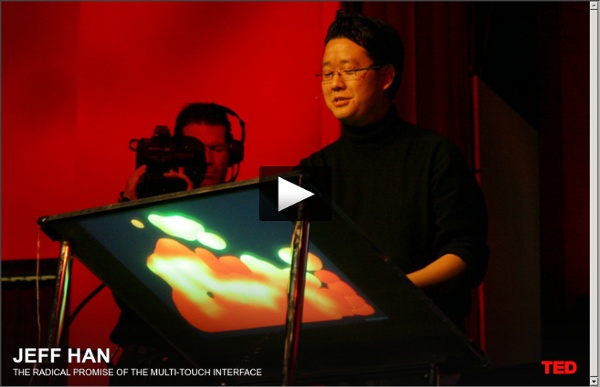



Health : Breakthrough: sensors that can convert thoughts into speech A mind reading machine has edged closer to reality after scientists found a way of converting thoughts into words. Researchers were able to render brain signals into speech for the first time, relying on sensors attached to the brain surface. The breakthrough, which is up to 90 percent accurate, will be a boon for paralysed patients who cannot speak and could help read anyone’s thoughts ultimately, reports the Telegraph. “We were beside ourselves with excitement when it started working,” said Prof Bradley Greger, bioengineer at the Utah University who led the project. “It was just one of the moments when everything came together. “We have been able to decode spoken words using only signals from the brain with a device that has promise for long-term use in paralysed patients who cannot speak. The breakthrough came when the team attached two button-sized grids of 16 tiny electrodes to an epileptic’s brain’s speech centres, says the journal of Neural Engineering.
List of thought processes Nature of thought[edit] Thought (or thinking) can be described as all of the following: An activity taking place in a: brain – organ that serves as the center of the nervous system in all vertebrate and most invertebrate animals (only a few invertebrates such as sponges, jellyfish, adult sea squirts and starfish do not have a brain). Types of thoughts[edit] Content of thoughts[edit] Types of thought (thinking)[edit] Listed below are types of thought, also known as thinking processes. Animal thought[edit] See Animal cognition Human thought[edit] Human thought Classifications of thought[edit] Williams' Taxonomy Creative processes[edit] Creative processes – Decision-making[edit] Decision-making Erroneous thinking[edit] see Error for some examples, see also Human error) Emotional intelligence (emotionally based thinking)[edit] Emotional intelligence – Problem solving[edit] Problem solving Reasoning[edit] Reasoning – Machine thought[edit] Machine thought (outline) Organizational thought[edit] Organizations[edit] Lists
Virtusphere 10 Design Thinking Principles for Strategic Business Innovation I explained to them that "design thinking" is crucial to any innovation effort if a company wants to break out of its current competitive structure. Today's management concepts are heavily based on "optimization" and "scale economics". It means making better use of your resource and exercise your market power to gain competitive advantage. It does not really address the other side of the problem which is "size" can create a different set of problems. That's when legacys and bureaucracy hinder imagination and opportunities for growth for large organizations. During the last century we saw the perfection of the bureaucracy -- a form of organization that has been enormously successful and is the result of thousands of years of trial and error evolution. I think this is really a BIG part of the problem. The bigger question is what frameworks and processes are required to support innovation and how "design thinking" come into play?
Thinkmap Visual Thesaurus - An online thesaurus and dictionary of over 145,000 words that you explore using an interactive map. Welcome to the Visual Thesaurus, an interactive tool that allows you to discover the connections between words in a visually captivating display. Word maps let you search for just the right word and then explore related concepts, revealing the way words and meanings relate to each other. It's a word-lover's delight, with more than 145,000 words and 115,000 meanings organized in an innovative and intuitive design. Try it now! Access to the Visual Thesaurus also includes our online magazine, updated daily with fresh new content about language and the creative process. Interested in finding out more?
Sally's MA Blog 6 User Experience Statistics You Should Pay Attention To Numbers, feedback, trends and other statistics coming from several areas which lie within and outside an organisation are factored so deeply in User Experience (UX) that they make their gathering, evaluation and the setting of action points an intricate science in and of itself. Indeed, the depth that is involved in the field of User Experience and its growing prevalence that spans through a wide range of industries can make it a daunting task to even decide which statistics are worth gathering and analyzing let alone how to analyse them and decide on what corrective measures to take based on their analysis. The difficulty lies not only in the ability to cull the important statistics from the more superfluous ones but also on deciding how much is necessary. What pearls of wisdom have these sages to impart, then? Frequently, Customer Relationship Management (CRM) seems to be one of the biggest source of statistics that contains useful values which are closely related to User Experience.
Design & Thinking - a documentary on design thinking User Experience, Incorporated By Robert Fabricant - January 7, 2013 In business today, “user experience” (or UX) has come to represent all of the qualities of a product or service that make it relevant or meaningful to an end-user -- everything from its look and feel design to how it responds when users interact with it, to the way it fits into people’s daily lives. You even people talking about UX as the way in which a consumer connects to a business -- all the touch-points from marketing to product development to distribution channels. It’s the “new black,” to borrow from a fashion phrase—as well as a reference to its influence on profitability. The value of UX as a corporate asset is no longer in question. The recognition of UX’s importance seems to be slowly sinking into corporate culture the way "brand" did a decade ago. Scalable Strategies for Managing UX To close this gap, leading businesses like Google are exploring scalable strategies that make UX relevant to engineers and MBAs across their organizations. 1.
Sally Bell - MA | What designers should understand about UX – 'People need to know the other side of the screen' Joe Leech aka @mrjoe